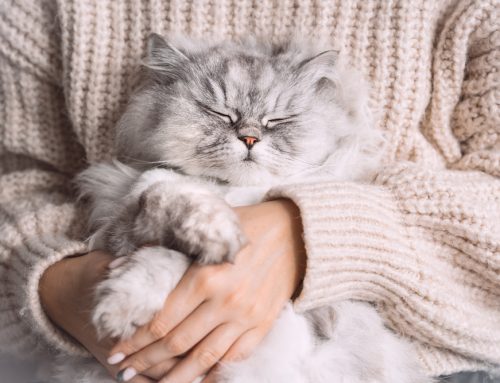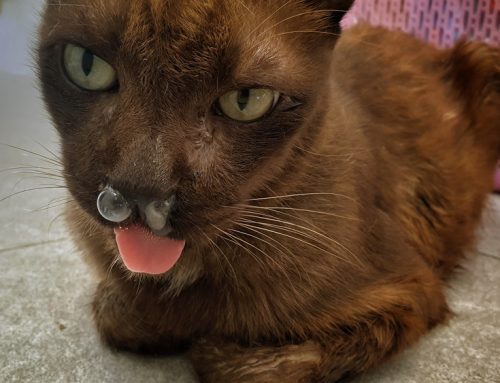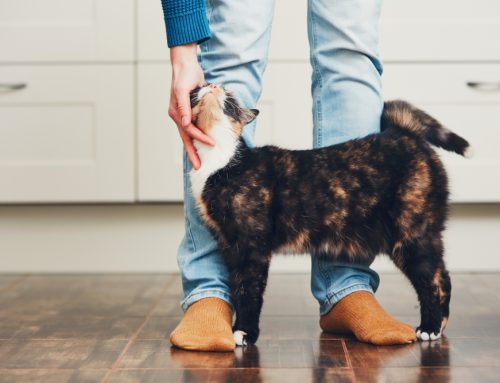As a cat owner, you’ve probably had periods of exasperation about your feline friend’s scratching habits. It’s a common grievance, but it’s important to understand that your cat isn’t scratching your favorite armchair or the side of your bed out of spite. Scratching is a deeply ingrained, natural feline behavior essential to their physical and mental health. Our team at Town & Country Animal Hospital explains the importance of feline scratching and shares tips to accommodate the behavior without sacrificing your upholstery.
Why cats need to scratch
While scratching seems destructive, the behavior is perfectly normal in the feline world. Cats have natural needs to scratch, and understanding why can help you provide appropriate scratching outlets that will keep your cat happy and healthy. Common reasons why cats scratch include:
- Communication and territory marking — Cats have scent glands in their paws, and they leave their scent on the surface that they scratch, effectively marking their territory. This communicates to other cats that the area is already claimed. It’s your cat’s way of saying, “This is my space.”
- Claw health — Scratching helps cats shed the outer sheaths of their claws to expose the fresh, sharp claws underneath. This keeps their claws sharp and ready for hunting, climbing, or self-defense, and is a cat’s natural way of maintaining healthy claws.
- Exercise and stretching — Scratching also serves as a form of exercise for cats and helps them stretch their bodies, particularly their back and shoulders, and flex their feet and claws. Deep stretching keeps their bodies flexible and muscles well-toned.
- Stress relief — Like people, cats can become stressed. They use scratching as a form of stress relief when they’re anxious, excited, or need to release energy. Scratching is self-soothing and helps them manage their emotions.
How to encourage appropriate feline scratching

Your next question likely is, “How can I accommodate this instinctual need without sacrificing my furniture?” The answer—provide suitable outlets for your cat’s scratching rather than trying to prevent the behavior. Use these tips to ensure your cat has appropriate places to satisfy their scratching instincts:
- Place scratching posts around the house — Invest in several scratching posts that you place strategically around your home, such as near your cat’s food and water, litter box, and favorite napping places. If you have more than one cat, ensure each cat has a scratching station, plus one additional station. Scratching posts are available in different shapes, sizes, and materials, but cats generally prefer posts covered in rough material they can shred, such as sisal, carpet, and cardboard. Most cats also like to scratch vertically, so their scratching posts should be taller than their body length and include resting perches. Provide several scratching posts with different textures to gauge their preferred surface type.
- Keep your cat’s nails trimmed — Your cat’s nails need routine trimming to shorten the length, minimize scratch-related damage, and prevent the claws from getting hung up on carpet and upholstery. Trimming your cat’s nails will take some practice, but you can ask your veterinarian to demonstrate how to perform the procedure effectively.
- Use feline pheromone spray — Pheromones can reduce your cat’s stress and anxiety, and decrease inappropriate scratching. Apply pheromone spray to the area or object that you want your cat to stop scratching. A room diffuser can also deter scratching.
- Provide enrichment for your cat — Provide regular interactive opportunities, such as petting, snuggling, and playing. Encourage your cat’s natural behaviors by providing perches, hiding places, and puzzle toys that simulate hunting and foraging.
- Positive reinforcement — Always use positive reinforcement to encourage your cat. Reward them with treats and affection when they scratch in appropriate areas and, over time, they’ll associate the rewards with scratching the specific items.
Cats do not mean to be destructive when they scratch. Rather, scratching is vital for their wellbeing and contributes significantly to their mental health. When you understand and accommodate your cat’s scratching, you enhance their physical and mental wellbeing, and strengthen your bond.
If you are concerned about your cat’s scratching or need a nail-trimming demonstration, contact our team at Town & Country Animal Hospital.







Leave A Comment